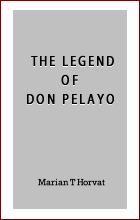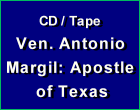Stories & Legends
 |
 |
 |
 |
 |
 |
 |
Miracles in the Crusades - 1
The Discovery of the Holy Lance
in the Battle of Antioch
On the way to Jerusalem, the Crusaders halted at Antioch, a strategic site they needed to take as a crucial place for supplies, reinforcements and retreat. The first siege of Antioch started on October 22, 1097 and ended on June 2, 1098, with the taking of the city, except for the citadel.
The second part of the siege, which is what concerns us here, is when the large army of the powerful emir Kerbogha arrived shortly after the Christians' victory to re-take Antioch.
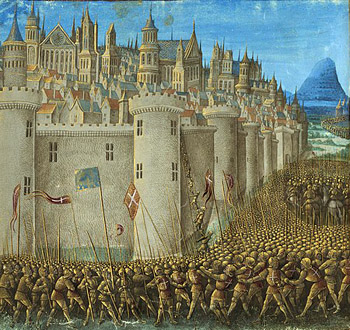 He and his massive army tried to storm the city on June 7 but failed, and two days later he had established his own siege around Antioch. Now it was the Crusaders who were under siege.
He and his massive army tried to storm the city on June 7 but failed, and two days later he had established his own siege around Antioch. Now it was the Crusaders who were under siege.
The Crusaders suffered from low supplies and a smaller army, Kerbogha's forces were two or three times their number. Further, many crusading knights had lost their horses and were "reduced to weak and helpless footmen," as one chronicler noted, also lowering the already weak morale in the camp.
But then, after three weeks the Crusaders decided on a sortie and to enter battle. The decision was a desperate one and a defeat seemed certain. Yet they won an overwhelming victory with relative ease.
Modern historians have unsuccessfully tried to offer practical explanations for the victory: the even lower morale of the Turks, the interminable quarrels of their leaders, etc. They generally ignore what the medieval chroniclers of battle reported as one main cause for the victory: that is, miracles.
Some days after the siege, Peter Bartholomew, a peasant crusader from Provence asked to see his commander Count Raymond of Aguilers, because he had important news.
When given an audience by the Count and the Bishop Adhemar de Puy, Peter told them that St. Andrew had appeared to him in a vision in which he was shown the whereabouts of the Holy Lance that pierced the side of Our Lord on the Cross. Count Raymond was impressed and a mood of excited expectation spread among the crusaders in the hard pressed city.
A group was organized to go to the indicated spot and, to the great joy of all present, the Lance was discovered. The finding of the Lance boosted the morale of all in the Christian camp and gave them the conviction of God's help in the battle.
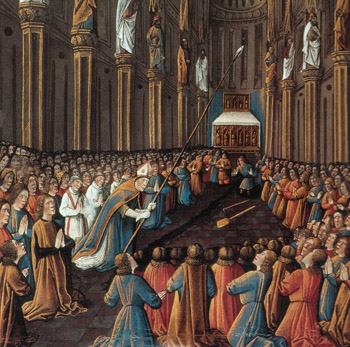 What follows here are excerpts from an account from the medieval chronicle Gesta Francorum (The Deeds of the Franks), written by an anonymous author circa 1100-1101:
What follows here are excerpts from an account from the medieval chronicle Gesta Francorum (The Deeds of the Franks), written by an anonymous author circa 1100-1101:
There was a certain pilgrim of our army, whose name was Peter, to whom St. Andrew the Apostle appeared before we entered the city and said: "What are you doing, good man?"
Peter answered, "Who are you?"
The Apostle said to him: "I am St. Andrew the Apostle. Know, my son, that when you will enter the town [Antioch], go to the Church of St. Peter. There you will find the Lance of our Savior Jesus Christ, with which He was wounded as He hung on the arms of the Cross."
Having said all this, the Apostle straightway withdrew.
But Peter, afraid to reveal the advice of the Apostle, was unwilling to make it known to the pilgrims. However, he thought that he had really seen that vision, and said: "Lord, who would believe this?" Then, at that very hour St. Andrew took him and carried him to the place where the Lance was hidden in the ground.
When we were a second time situated in such desperate straits as we have stated above, St. Andrew came again, saying to him: "Why have you not yet taken the Lance from the earth as I commanded you? Know, verily, that whoever shall bear this lance in battle shall never be overcome by an enemy."
Peter, indeed, straightway made known to our men the mystery of the Apostle.
The people, however, did not believe it, but refused, saying: "How can we believe this?" For they were utterly terrified and thought that they were to die forthwith.
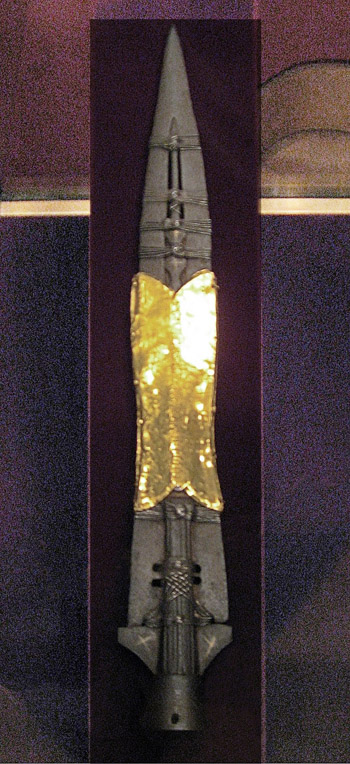 Thereupon, this man Peter came forth and swore that it was all most true, and that indeed St. Andrew had twice appeared to him in a vision and had said to him: "Rise up. Go and tell the people of God not to fear, but to trust firmly with whole heart in the one true God and they will be everywhere victorious. Within five days the Lord will send them such a token that they will remain happy and joyful, and if they wish to fight, let them go out immediately to battle, all together, and all their enemies will be conquered, and no one will stand against them."
Thereupon, this man Peter came forth and swore that it was all most true, and that indeed St. Andrew had twice appeared to him in a vision and had said to him: "Rise up. Go and tell the people of God not to fear, but to trust firmly with whole heart in the one true God and they will be everywhere victorious. Within five days the Lord will send them such a token that they will remain happy and joyful, and if they wish to fight, let them go out immediately to battle, all together, and all their enemies will be conquered, and no one will stand against them."
Thereupon, when they heard that their enemies were to be overcome by them, they began straightway to revive and to encourage one another, saying: "Bestir yourselves, and be everywhere brave and alert, since the Lord will come to our aid in the next battle and will be the greatest refuge to His people whom He sees lingering in sorrow."
Accordingly, upon hearing the statements of that man Peter Bartholomew who reported to us the revelation of Christ through the words of the Apostle Andrew, we went in haste immediately to the place in the Church of St. Peter which he had pointed out.
Thirteen men dug there from morning until vespers. And so that man Peter found the Lance, just where he had indicated. The others received it with great gladness and fear, and a joy beyond measure arose in the whole city. And, from that hour, we took counsel of battle among ourselves.
This miracle so transformed the morale of the besieged army that on June 28, 1098, the reanimated Crusaders set out from Antioch for battle. They were led by their best soldier, the Norman warrior Bohemond of Taranto, and the Holy Lance was carried by the troops of another of their leading commanders, Count Raymond of Aguilers.
We will see in the next article how Heaven sent help to the Crusaders in the ensuing battle.
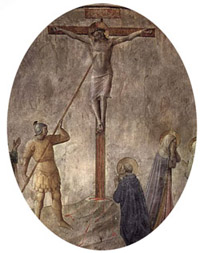
Continued


The second part of the siege, which is what concerns us here, is when the large army of the powerful emir Kerbogha arrived shortly after the Christians' victory to re-take Antioch.

The Crusaders besiege Antioch and take the city in 1098
The Crusaders suffered from low supplies and a smaller army, Kerbogha's forces were two or three times their number. Further, many crusading knights had lost their horses and were "reduced to weak and helpless footmen," as one chronicler noted, also lowering the already weak morale in the camp.
But then, after three weeks the Crusaders decided on a sortie and to enter battle. The decision was a desperate one and a defeat seemed certain. Yet they won an overwhelming victory with relative ease.
Modern historians have unsuccessfully tried to offer practical explanations for the victory: the even lower morale of the Turks, the interminable quarrels of their leaders, etc. They generally ignore what the medieval chroniclers of battle reported as one main cause for the victory: that is, miracles.
- The first miracle that Our Lord gave to raise the morale and encourage the leaders to enter battle was the finding of the Holy Lance in St. Peter's Cathedral in Antioch;
- The second miracle was the celestial soldiers on white horses that appeared from the mountains to help them, bearing white banners and led by St George.
Some days after the siege, Peter Bartholomew, a peasant crusader from Provence asked to see his commander Count Raymond of Aguilers, because he had important news.
When given an audience by the Count and the Bishop Adhemar de Puy, Peter told them that St. Andrew had appeared to him in a vision in which he was shown the whereabouts of the Holy Lance that pierced the side of Our Lord on the Cross. Count Raymond was impressed and a mood of excited expectation spread among the crusaders in the hard pressed city.
A group was organized to go to the indicated spot and, to the great joy of all present, the Lance was discovered. The finding of the Lance boosted the morale of all in the Christian camp and gave them the conviction of God's help in the battle.

The Bishop raises up the Holy Lance before the exhuberant crowd who kneels in prayer
There was a certain pilgrim of our army, whose name was Peter, to whom St. Andrew the Apostle appeared before we entered the city and said: "What are you doing, good man?"
Peter answered, "Who are you?"
The Apostle said to him: "I am St. Andrew the Apostle. Know, my son, that when you will enter the town [Antioch], go to the Church of St. Peter. There you will find the Lance of our Savior Jesus Christ, with which He was wounded as He hung on the arms of the Cross."
Having said all this, the Apostle straightway withdrew.
But Peter, afraid to reveal the advice of the Apostle, was unwilling to make it known to the pilgrims. However, he thought that he had really seen that vision, and said: "Lord, who would believe this?" Then, at that very hour St. Andrew took him and carried him to the place where the Lance was hidden in the ground.
When we were a second time situated in such desperate straits as we have stated above, St. Andrew came again, saying to him: "Why have you not yet taken the Lance from the earth as I commanded you? Know, verily, that whoever shall bear this lance in battle shall never be overcome by an enemy."
Peter, indeed, straightway made known to our men the mystery of the Apostle.
The people, however, did not believe it, but refused, saying: "How can we believe this?" For they were utterly terrified and thought that they were to die forthwith.

The Holy Lance, displayed in the Royal Palace, Vienna, Austria
Thereupon, when they heard that their enemies were to be overcome by them, they began straightway to revive and to encourage one another, saying: "Bestir yourselves, and be everywhere brave and alert, since the Lord will come to our aid in the next battle and will be the greatest refuge to His people whom He sees lingering in sorrow."
Accordingly, upon hearing the statements of that man Peter Bartholomew who reported to us the revelation of Christ through the words of the Apostle Andrew, we went in haste immediately to the place in the Church of St. Peter which he had pointed out.
Thirteen men dug there from morning until vespers. And so that man Peter found the Lance, just where he had indicated. The others received it with great gladness and fear, and a joy beyond measure arose in the whole city. And, from that hour, we took counsel of battle among ourselves.
This miracle so transformed the morale of the besieged army that on June 28, 1098, the reanimated Crusaders set out from Antioch for battle. They were led by their best soldier, the Norman warrior Bohemond of Taranto, and the Holy Lance was carried by the troops of another of their leading commanders, Count Raymond of Aguilers.
We will see in the next article how Heaven sent help to the Crusaders in the ensuing battle.

Continued

Adapted from August. C. Krey, The First Crusade: The Accounts of Eyewitnesses
and Participants, Princeton: 1921, pp. 174-176.
Posted February 2, 2019
and Participants, Princeton: 1921, pp. 174-176.
Posted February 2, 2019





